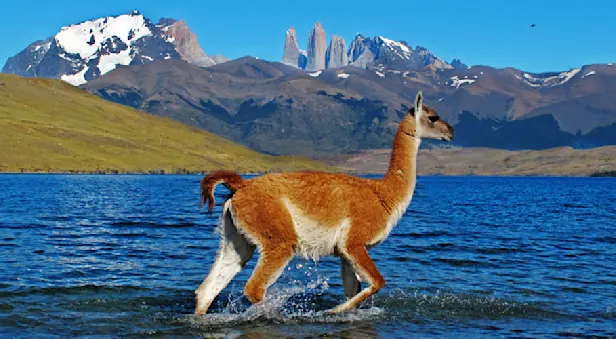Puma Facts | Patagonia Wildlife Guide
PHYSICAL CHARACTERISTICS
The puma is a member of the Felidae family and is the largest predator in Patagonia. Females weigh 110 pounds while the larger male weighs approximately 176 pounds, and they are generally between 10 to 12 feet in length. Pumas have a rounded head with erect ears and strong jaws for clutching prey. Their sleek, muscular bodies end with a thick, long tail, and their large forepaws have five retractable claws, including a dewclaw. Their fur is typically a tawny golden color, though they may have more silvery or reddish coats.
HABITAT & HUNTING
Pumas inhabit 28 countries in the Americas, and Patagonian pumas, one of the largest subspecies, can be found from Arica to Magallanes near the tip of Chile. They dwell in shrubby steppe ecoregions, dense woodlands, and mountains, and are most easily spotted in Torres del Paine National Park, where there is a particularly high density. In Torres del Paine, males and females have overlapping home ranges up to 40 square miles in size.
Prowling the rocky crags and forests, these agile, sharp-eyed cats are extremely proficient night hunters, with a highly developed sense of smell and hearing. These carnivores hunt animals both large and small, including birds such as lesser rheas and upland geese, small mammals such as rodents and hares, deer, and occasionally domestic livestock. The pumas favorite prey is guanacos, and being ambush predators, they stalk their victims before springing with a powerful leap and securing their meal with a fatal bite to the neck. Though pumas hunt alone, they have been recorded sharing kills with one another.
REPRODUCTION
While pumas, like most cats, are solitary creatures, adults come together to breed, and mothers are fiercely protective of their cubs. Females become sexually mature at 1.5 to 3 years old, and typically give birth to one litter every two to three years. During the spring, a male puma breeds with many females, leaving mothers to raise their cubs alone. After a 3-month gestation period, mothers give birth in a cave or alcove to a litter of between one and six cubs–typically two.
The blind newborns, who will open their eyes after two weeks, weigh only 1 pound. They are covered with black spots, which help camouflage them from predators and eventually fade with age. The kittens nurse for three months, steadily growing in size as they incorporate meat into their diet. By 8 months old the cubs are about 45 pounds and are learning to hunt under the guidance of their mother, who leads them to kill sites and teaches them to catch small prey. After two years, juveniles leave their mothers to establish their own home ranges–male juveniles typically depart before females.
CONSERVATION STATUS
Pumas in Patagonia are threatened by a loss of prey as agricultural developments infringe on their habitat. As the population of guanacos decreases from having to compete for grass with introduced livestock, pumas resort to hunting the sheep of ranchers. Pumas are often poached as a backlash for killing domestic animals, and this has provoked people to create initiatives to mitigate human-puma conflict and promote co-existence between humans and the local wildlife.
Solutions for ranchers include livestock guarding dogs and corralling sheep at night, and for pumas, eco-tourism may be one of their best sources of protection. The importance of preserving critical puma habitat is enforced to the government and local businesses when visitors invest in seeing and learning about these elusive wild cats. The Chilean government prohibited the hunting of pumas in 1980, and with the added protections in place at Torres del Paine, puma populations have risen within the national park.
See Pumas on These Patagonia Adventures

Patagonia Wilderness & Wildlife Explorer
An all-encompassing expedition straddling Chile and Argentina! Marvel at the granite spires of Torres del Paine, survey the vast ice face of Perito Moreno Glacier, search for pumas and see condors soar.

























